
Here’s the full edition of our 84-page August edition of Tudor Life Magazine. The focus of this magazine is “everyday life” and we have loads of articles for members to enjoy…
[Read More...]
Here’s the full edition of our 84-page August edition of Tudor Life Magazine. The focus of this magazine is “everyday life” and we have loads of articles for members to enjoy…
[Read More...]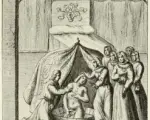
On either 22nd or 23rd June 1509, before his joint coronation with Queen Catherine of Aragon on 24th June, King Henry VIII created twenty-four Knights of the Bath at the Tower of London.
Letters and Papers names the knights as “Richard (sic) Radclyff lord Fitzwater, the lord Scroop of Bolton, the lord Fitzhugh, the lord Mountjoye, the lord Dawbeney, the lord Brooke, Sir Henry Clyfford, Sir Maurice Berkeley, Sir Thomas Knyvet, Sir Andrew Wyndesore, Sir Thomas Parr, Sir Thomas Boleyne, Sir Richard Wentworth, Sir Henry Owtrede, Sir Francis Cheyny, Sir Henry Wyotte, Sir George Hastynges, Sir Thomas Metham, Sir Thomas Bedyngfeld, Sir John Shelton, Sir Giles Alyngton, Sir John Trevanyon, Sir William Crowmer, Sir John Heydon, Sir Godarde Oxenbrige and Sir Henry Sacheverell.”
Who were these men?
[Read More...]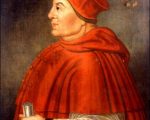
Thomas Wolsey was born between 1470 and 1473 in Ipswich, Suffolk. He was the son of Robert and Joan Wolsey. Robert owned a tavern in the parish of St. Mary at the Elms in Ipswich. Traditionally, Wolsey’s father has been identified as a butcher and cattle dealer. Thomas Wolsey’s humble origins proved a source of mirth to his critics during his long career. During his childhood and adolescence, Wolsey attended school in Ipswich and later studied at Magdalen College, Oxford, graduating with BA in 1486 when he was about fifteen years old. A decade later, he was ordained as a priest in the parish church of St. Peter in Marlborough. The year before, he graduated with MA. For a short period, Wolsey served as master of Magdalen School and, later, as dean of divinity.
[Read More...]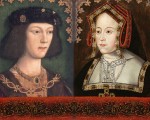
On this day in history…
5th June:
1516 – Maria de Salinas married William, 10th Lord Willoughby of Eresby. Maria was a good friend of Catherine of Aragon, and she and William were the parents of Katherine Willoughby, who went on to marry Charles Brandon, Duke of Suffolk.
1536 – Edward Seymour was created Viscount Beauchamp of Hache, Somerset, following the wedding of his sister, Jane Seymour, and Henry VIII.
1539 – Death of Brian Hygdon, Dean of York. Hygdon was close to Wolsey and Cromwell, and served on the King’s Council in the North. He was buried in York Minster.
1577 – Death of John Rastell, author, Jesuit and Vice-Rector at Ingolstadt. He died in Ingolstadt.
1588 – Death of Anne de Vere (née Cecil), Countess of Oxford, at Greenwich. She was buried at Westminster Abbey. Anne was the daughter of William Cecil, 1st Baron Burghley, and his second wife, Mildred. She had been contracted to marry Philip Sidney, but married Edward de Vere, 17th Earl of Oxford in 1571. It was not a successful marriage, and the couple separated after Oxford refused to recognise their daughter, Elizabeth, as his.
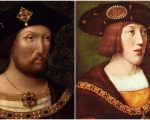
On 26th May 1520, King Henry VIII met with Charles V, Holy Roman Emperor, at Dover Castle on the south coast of England.
Here is an account of this event from chronicler Edward Hall:
“The king intending and perseveryng in purpose to mete with Frances the Frenche kyng, greate and riche provisions were made, wherfore the noble Kyng and the Quene with all the noble courte removed the twentie and one daie of May beyng on Mundaie, from their maner of Grenewyche towardes the Sea side, and so on the Fridaie beeyng the twentie and five daie of May, arrived at the citee of Canterbury, intendyng there to kepe his Pentecoste.
Sone after whiche commyng to Cantorbury, tidynges wer brought that Charles Emperor electe, was on the sea, in sight of the coast of England, wherfore officers of the kyng were sent with great diligence to the Castle and toune of Dover to be there in a redines against the arrival of the Emperor.
[Read More...]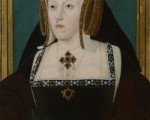
Katherine of Aragon was born into the royal Spanish household on 16th December 1485, at the Archbishop’s Palace of Alcalá de Henares. She was the daughter of King Ferdinand II of Aragon and his illustrious wife, Isabella I of Castile. Katherine’s parents were the Catholic powerhouses of Western Europe during the late fifteenth century, therefore during her youth, the young Spanish princess would have envisioned the grand future that awaited her, with an ambitious marriage into an equally powerful European royal household.
At aged just three, her parents were in negotiations with the English king, Henry VII, for a suitable marriage to his son, Arthur. The Tudors had recently taken the throne after defeating the Yorkist Richard III at Bosworth in 1485, although their Lancastrian claimant to the throne was still vulnerable to usurpation. England required international support to ensure the legitimacy and security of their house. An Anglo-Spanish alliance would be vitally important for the country’s prosperity and position in European politics.
[Read More...]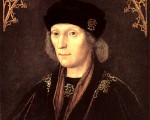
On this day in history, 9th May 1509, the remains of Henry VII, who had died at Richmond Palace on 21st April 1509, were taken to Old St Paul’s.
Here’s an account by James Peller Malcolm (1767-1815) in Londinium redivivum:-
“On the 9th of May, 1509, the body of Henry VII. was placed in a chariot, covered with black cloth of gold, which was drawn by five spirited horses, whose trappings were of black velvet, adorned with quishions of gold. The effigies of his Majesty lay upon the corpse, dressed in his regal habiliments. The carriage had suspended on it banners of arms, titles, and pedigrees. A number of prelates preceded the body, who were followed by the deceased king’s servants; after it were nine mourners. Six hundred men bearing torches surrounded the chariot.
[Read More...]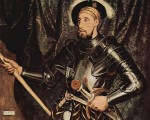
In today's article, I will be exploring the life of Nicholas Carew, Master of the Horse and close friend of King Henry VIII. Carew's life was one of prosperity moving from one advantageous position to another until suddenly and unexpectedly his king turned upon him. Carew would prove that not even being a close friend to the king could save you from the executioner's block.
While the exact date of Nicholas Carew’s birth is unknown, it is believed that he was born by 1496 to Sir Richard Carew of Beddington. There is no information regarding Carew’s childhood, however, during his teenage years, he made his first appearance at court, and in May 1511 he was made a groom of the privy chamber. In 1513 he was associated with his father in a grant from the crown for the office of Lieutenant of Calais Castle. After the death of his father, Carew surrendered the association with Lieutenant of Calais yet continued to receive an annuity from Calais of around £100. Despite protests from other courtiers, this annuity continued until 1524 when Carew was granted lands of equal value.
In the autumn of 1513, Henry VIII decided to invade France with an army of 30, 000 men, which included Carew. The English army took the city of Therouanne in Artois without a great deal of difficulty and then went on to besiege Tournai. Nicholas’s father led the artillery at Tournai and for his efforts at Therouanne Nicholas received “a coat of rivet” from the king.
The following year, Carew married Elizabeth, daughter of Sir Thomas Bryan of Ashridge, vice-chamberlain to Queen Katherine of Aragon. The couple were granted the lands of Wallington, Carshalton, Beddington, Woodmansterne, Woodcote, and Mitcham, in Surrey upon their marriage. Nicholas and Elizabeth had one son, Francis, and four daughters, Elizabeth, Mary, Anne, and Isabel.
By 1515, Nicholas was recorded as being a squire to Henry VIII and one of the king’s cupbearers, being granted 30 marks per year. Sometime between 1515 and 7th July 1517, Nicholas was knighted. On the 7th of July 1517, Nicholas was recorded as a knight who attended the ambassadors of the future Charles V, at a banquet. On 18th December, Carew was also recorded as a knight when he was appointed keeper of the manor of Pleasaunce in East Greenwich, and of the accompanying park. In addition to being knighted, in 1518 Carew had the distinction of being appointed a gentleman of the privy chamber.
Nicholas Carew appears to have been a close friend of Henry VIII, both men similar in age, strong and athletic. They also shared common interests including a love of hunting and jousting. Carew was frequently mentioned in the lists of men participating in jousting events during Henry VIII’s early reign. One such example was on 17th July 1517 when Carew distinguished himself in the jousts in which Henry VIII also participated. After the jousts, Carew entered the lists, and three men carried out a lance nine inches in diameter and twelve feet long! Carew carried the huge lance three-quarters of the way down the lists to the amazement of the crowd!
Sometime between 1514 and 1518, Carew was banished from court. The reason and exact length of the banishment are unknown. By 1519, he had returned. However, in that same year, Carew and a number of men were banished from court partially due to their familiarity and influence upon the king and also in an attempt to save funds. Carew’s punishment was to be appointed as Lieutenant of Rysbank Tower, the tower that guarded the entrance to Calais harbour. Carew’s banishment was short; within six months he was back at court attending festivities. On 19th October 1520, Carew relinquished his post at Calais and in return was granted a pension of £100. A month later he gave up the annuity of 30 marks as the king’s cupbearer.
By 1518-1519, Carew had been appointed as sheriff of Surrey and Sussex. He also attended the Field of Cloth of Gold in June 1520, where Henry VIII met with the French king, Francis I, and participated in the jousting events for the English. Following the Field of the Cloth of Gold, Carew travelled with Henry VIII to Gravelines to meet Charles V.
Carew’s prospects continued to rise when in 1521 he was granted the offices of Constable of Wallingford Castle and Steward of the honour of Wallingford and St. Walric, and land at Chiltern. In Christmas 1521 Carew had the high honour of being appointed as the king’s carver. On 18th July 1522, Carew was appointed as Master of the Horse, one of the three highest positions at court. He was also granted the manor of Brasted in Kent, which had formally belonged to the Duke of Buckingham, and the manor of Bletchingley in Surrey.
Carew also proved to be a capable ambassador to Henry VIII. In late 1520, Carew was sent to Francis I to deliver papers and to persuade the French king not to invade Italy. Although the mission was not completely successful, Carew was granted £100 for his services. In 1527, Carew, Lord Lisle, Dr Taylor, Anthony Browne and Thomas Wriothesley were ordered to bestow the Order of the Garter on Francis I. In the same year, Carew's lands were assessed at around £400, a sizeable sum for the time.
In 1529, Carew continued his ambassadorial duties when he, Dr Sampson and Dr Bennet were sent to Bologna to ratify the Treaty of Cambrai with Charles V. Carew was also tasked with seeking Charles V’s thoughts on Henry VIII’s “Great Matter”, that is the annulment of Henry VIII’s marriage to Katherine of Aragon in order to marry Anne Boleyn. When Carew left Bologna on 8th February 1530, he was given a gold chain worth 2000 ducats by Charles V.
In 1532, Carew returned to France to meet with Francis I and to organise a meeting between Henry VIII and Francis. Carew was reported as wishing he did not have to go. However, he was a dutiful servant and followed his king’s wishes. It is highly likely that Carew spoke with Francis I regarding his thoughts on Henry VIII’s “Great Matter” and the king’s possible marriage to Anne Boleyn.
Francis I appeared to have highly favoured Carew as in 1533 and in 1534 he wrote to Henry VIII to ask him to bestow the Order of the Garter, the highest order of chivalry in England, on Carew. As no current positions were available in the order, Henry VIII promised to do so at the next available opening. In April 1536, it was commonly believed that George Boleyn, brother of Anne Boleyn, now second wife to Henry VIII, would receive the appointment to the Order of the Garter. However, on St. George’s day (23rd April) Sir Nicholas Carew was appointed. While a huge honour to Carew, such an appointment was a major blow to the Boleyns.
Carew was no friend of the Boleyns. When Henry VIII’s fool spoke favourably of Queen Katherine of Aragon, Henry VIII was outraged and banished his fool from court for a time. The fool sought refuge with Carew. Carew also aligned himself with Thomas Cromwell and spoke unfavourably of Anne Boleyn to the King. It is believed that Carew was one of the men coaching Jane Seymour on how to behave with the king, even providing Jane lodgings at his house at Beddington so that the king could visit her regularly.
Carew was installed into the Order of the Garter on 21st May 1537, at the order’s feast. He also attended the christening of Henry VIII’s longed-for son and heir, Edward, in October 1537. However, in November 1538, the strings would start to unravel that would lead to Carew’s arrest and his execution.
In November, Henry Pole, Baron Montague, and Henry Courtney, Marquis of Exeter, were arrested and taken to the Tower of London. They were charged with treason for corresponding with Cardinal Reginal Pole, Montague’s brother and an enemy of Henry VIII, and for wishing to see a change in the kingdom. Early the following year, Carew was arrested and then tried on 14th February 1539. At his trial, Carew was accused of corresponding with Montague and hiding Montague’s traitorous plans, as well as wishing for a change in the realm. The letters that passed between Carew and Montague were allegedly burned, and the evidence against Carew was flimsy at best. He was still sentenced to death.
Carew was buried in St Botolph without Aldgate. When his wife, Elizabeth, died in 1546, her remains were buried with Nicholas. On their deaths, the remains of their daughter Mary and Mary’s husband Sir Arthur Darcy were added to the tomb. As a traitor, Carew’s property and lands reverted to the crown, but an act of Parliament in 1554 granted Carew’s son, Francis, his father’s former property and lands.
Sir Nicholas Carew was a loyal servant and friend of King Henry VIII. He served his king both at court and as an ambassador overseas, as well as participating in court festivities. He shared a love of jousting and hunting with the king and manoeuvred the ever-changing social order of the king’s court. Despite his close friendship with Henry VIII, Carew’s end came swiftly and suddenly, showing that even being a friend of Henry VIII could not save you from the executioner's block.
Sarah's other "The King's Men" articles:
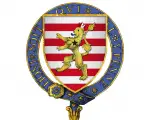
The third article in Sarah Bryson’s series on prominent Tudor courtiers…
In this article, I will be exploring the life of Thomas Brandon, uncle to the more famous Charles Brandon, Duke of Suffolk. Thomas Brandon served five kings during his lifetime; however, it was under the rule of King Henry VIII that he breathed his last. Frustratingly little is known about Thomas Brandon’s early life and most information that we have today comes from his adult years and the latter years of his life serving the Tudor King’s, Henry VII and Henry VIII.
[Read More...]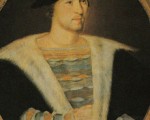
In this month’s look at the men of Henry VIII’s court, I want to explore the life of William Carey, courtier, a member of the king’s privy chamber, and an esquire of the body. William Carey is most famously known for being the husband of Mary Boleyn, older sister of Anne Boleyn. However, he was more than just a husband; he was a man on the rise and distant cousin to the King.
There is little known about William Carey’s early life. He appears to be the second son of Thomas Carey from Chilton Foliat, Wiltshire, and his wife Margaret, daughter of Sir Robert Spencer of Ashbury, Devon. The family had strong Lancastrian ties as William’s grandfather, Sir William Carey of Cockington, Devon, on his father’s side, was a Lancastrian supporter and soldier who was beheaded at Tewkesbury in 1471. William’s grandmother on his mother’s side was Eleanor Beaufort, daughter and coheir of Edmund Beaufort, Duke of Somerset. The Duke of Somerset was a staunch Lancastrian supporter and right-hand man of King Henry VI. It was rumoured that Somerset even had an affair with the King’s mother, Catherine Valois, who was also the grandmother of King Henry VII! Through his mother’s side, William Carey was a distant cousin of King Henry VIII.
[Read More...]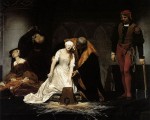
On this day in history, 6th February…
1557 – The remains of reformers Martin Bucer and Paul Fagius were exhumed and publicly burned, after being posthumously found guilty of heresy. They were burned, along with their books, on Market Hill in Cambridge.
1561 – Baptism of Tailboys Dymoke (pseudonym Thomas Cutwode) at Kyme in Lincolnshire. He was the son of Sir Robert Dymoke, and his wife, Bridget (née Clinton). Dymoke is known for his allegorical poem, Caltha poetarum, or, “The Bumble Bee”, which he published under the name of Thomas Cutwode.
1585 – Death of Edmund Plowden, lawyer, legal scholar and law reporter, in London. He was laid to rest in the Middle Temple Church. Cambridge University libraries and the British Library contain manuscripts of his commentaries and opinions, and he is known for his 1571 “ Les comentaries ou les reportes de Edmunde Plowden” volume of law reports covering cases during the reigns of Edward VI, Mary I and Elizabeth I.
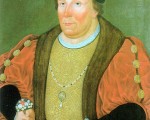
Hello, and welcome to my new series “The King’s Men”. Each month I will be writing an article exploring the life of one man that served Henry VIII. Some of these men had prosperous careers, reaching wondrous heights at court and exerting great influence under the King. Other men reached to high and met their end under orders of Henry VIII. However, each man left their imprint on Henry’s court and history, and it is the lives of these men that I will be exploring each month.
This month I will be looking at the life of Edward Stafford, 3rd Duke of Buckingham.
[Read More...]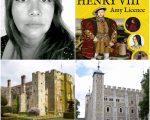
A big welcome to historian Amy Licence who is joining us today to kick off her book tour for her children’s book All About Henry VIII. It’s a wonderful book, as are the others in the series, and you can enter the giveaway to win a copy of this book by leaving a comment before midnight on 27th January 2017. Simply comment below this post saying which historical place linked to Henry VIII you’d like to visit and why. One comment will be picked at random and the winner contacted.
[Read More...]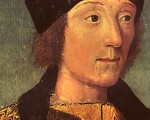
On this day in history events for 24th to 30th October.
1521 – Death of Robert Fayrfax (Fairfax), church musician and composer, in St Albans. He was buried in the abbey there. Fayrfax was a Gentleman of the Chapel of the households of both Henry VII and Henry VIII, and attended the 1521 Field of Cloth of Gold. His works included the Magnificat Regale, Salve regina, six masses and English part-songs.
1525 – Death of Thomas Dacre, 2nd Baron Dacre of Gilsland, from a fall from his horse in the English borders. He was buried at Lanercost Priory, in the Dacre family mausoleum. Dacre fought at the Battle of Bosworth on the side of Richard III, but was able to earn Henry VII’s trust and favour afterwards. Henry VII put Dacre in charge of the English west march and he was active in the borders, until he was imprisoned in early 1525 after trouble in the borders. He was fined and released in September 1525.
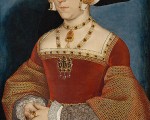
On 30th May 1536, King Henry VIII married his third wife, Jane Seymour, in the Queen’s Closet at Whitehall; a mere eleven days after the execution of his second wife Anne Boleyn.
Jane Seymour first arrived at court in the late 1520s/early 1530s and attended both of Henry VIII’s previous wives, Katherine of Aragon and Anne Boleyn, as a lady-in-waiting. However, it does not appear that the King’s eye turned to Jane until early 1536.
[Read More...]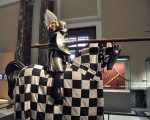
Jousting, much like rugby or American football, was a full-contact, dangerous sport. Severe injuries and even death were quite common. Henry II of France died in 1559 when a lance’s splinter breached Henry’s helmet and entered his brain by way of the eye. More like American football and less like rugby, individuals participating in the joust wore protection.
Most armour was made by smiths in either Germany or Italy, though those smiths would travel to workshops all over the continent and England. One workshop in England boasted of smiths from Flanders, the Netherlands, Germany and Italy. The city of Milan was most famous for its skilled armour smiths, though German armourers under the Holy Roman Empire outfitted the likes of Maximilian I and Charles V. Henry VIII established royal workshops at Greenwich, with previous workshops having been located in London. Some French workshops recruited Italians for their workshops in Lyon and Tours. There is not much information about armour workshops in either Spain or the Netherlands, but most of the large Belgian cities had active armourer’s guilds during the Renaissance period.
[Read More...]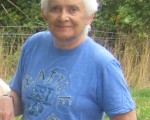
Susan Fern finishes her two part talk about the life of Rhys ap Thomas, from the Battle of Bosworth through the Field of the Cloth of Gold to his death in Carmarthen. Rhys was a fascinating character who has been largely forgotten yet was key to many of the successes of the Tudors.
[Read More...]
Here’s the latest magazine with all our regular items and contributors plus lots of fascinating articles about people and places from the Tudor period.
[Read More...]